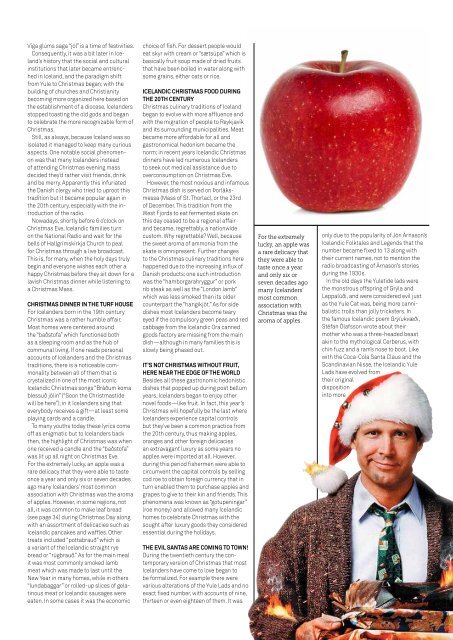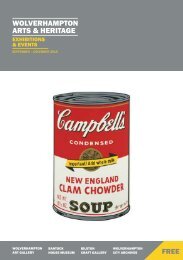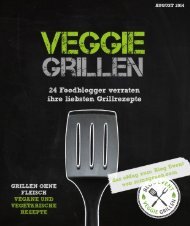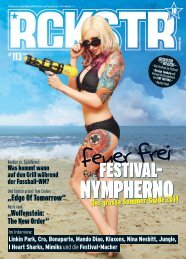WOWair
You also want an ePaper? Increase the reach of your titles
YUMPU automatically turns print PDFs into web optimized ePapers that Google loves.
Víga glúms saga “jól” is a time of festivities.<br />
Consequently, it was a bit later in Ice -<br />
land’s history that the social and cult ural<br />
institutions that later became en trenc -<br />
hed in Iceland, and the paradigm shift<br />
from Yule to Christmas began; with the<br />
building of churches and Christianity<br />
becoming more organized here based on<br />
the establishment of a diocese, Icelanders<br />
stopped toasting the old gods and began<br />
to celebrate the more recognizable form of<br />
Christmas.<br />
Still, as always, because Iceland was so<br />
isolated it managed to keep many curious<br />
aspects. One notable social pheno meno<br />
n was that many Icelanders instead<br />
of attending Christmas evening mass<br />
de cided they’d rather visit friends, drink<br />
and be merry. Apparently this infuriated<br />
the Danish clergy who tried to uproot this<br />
tradition but it became popular again in<br />
the 20th century, especially with the in -<br />
troduction of the radio.<br />
Nowadays, shortly before 6 o’clock on<br />
Christmas Eve, Icelandic families turn<br />
on the National Radio and wait for the<br />
bells of Hallgrímskirkja Church to peal<br />
for Christ mas through a live broadcast.<br />
This is, for many, when the holy days truly<br />
begin and everyone wishes each other a<br />
happy Christmas before they sit down for a<br />
lavish Christmas dinner while listening to<br />
a Christmas Mass.<br />
Christmas dinner in the turf house<br />
For Icelanders born in the 19th century<br />
Christmas was a rather humble affair.<br />
Most homes were centered around<br />
the “baðstofa” which functioned both<br />
as a sleeping room and as the hub of<br />
communal living. If one reads personal<br />
accounts of Icelanders and the Christmas<br />
tra di tions, there is a noticeable com -<br />
monality between all of them that is<br />
crystalized in one of the most iconic<br />
Ice landic Christmas songs “Bráðum koma<br />
blessuð jólin” (“Soon the Christmastide<br />
will be here”); in it Icelanders sing that<br />
everybody receives a gift—at least some<br />
playing cards and a candle.<br />
To many youths today these lyrics come<br />
off as enigmatic but to Icelanders back<br />
then, the highlight of Christmas was when<br />
one received a candle and the “baðstofa”<br />
was lit up all night on Christmas Eve.<br />
For the extremely lucky, an apple was a<br />
rare delicacy that they were able to taste<br />
once a year and only six or seven decades<br />
ago many Icelanders’ most common<br />
association with Christmas was the aroma<br />
of apples. However, in some regions, not<br />
all, it was common to make leaf bread<br />
(see page 34) during Christmas Day along<br />
with an assortment of delicacies such as<br />
Icelandic pancakes and waffles. Other<br />
treats included “pottabrauð” which is<br />
a variant of the Icelandic straight rye<br />
bread or “rúgbrauð.” As for the main meal<br />
it was most commonly smoked lamb<br />
meat which was made to last until the<br />
New Year in many homes, while in others<br />
“lundabaggar” or rolled-up slices of gela -<br />
tinous meat or Icelandic sausages were<br />
eaten. In some cases it was the economic<br />
choice of fish. For dessert people would<br />
eat skyr with cream or “sætsúpa” which is<br />
basically fruit soup made of dried fruits<br />
that have been boiled in water along with<br />
some grains, either oats or rice.<br />
Icelandic Christmas food during<br />
the 20th century<br />
Christmas culinary traditions of Iceland<br />
began to evolve with more affluence and<br />
with the migration of people to Reykjavík<br />
and its surrounding municipalities. Meat<br />
became more affordable for all and<br />
gastronomical hedonism became the<br />
norm; in recent years Icelandic Christmas<br />
dinners have led numerous Icelanders<br />
to seek out medical assistance due to<br />
overconsumption on Christmas Eve.<br />
However, the most noxious and in fa mous<br />
Christmas dish is served on Þorláks -<br />
messa (Mass of St. Thorlac), or the 23rd<br />
of December. This tradition from the<br />
West Fjords to eat fermented skate on<br />
this day ceased to be a regional affair<br />
and became, regrettably, a nationwide<br />
custom. Why regrettable? Well, because<br />
the sweet aroma of ammonia from the<br />
skate is omnipresent. Further changes<br />
to the Christmas culinary traditions here<br />
happened due to the increasing influx of<br />
Danish products; one such introduction<br />
was the “hamborgarahryggur” or pork<br />
rib steak as well as the “London lamb”<br />
which was less smoked than its older<br />
counterpart the “hangikjöt.” As for side<br />
dishes most Icelanders become teary<br />
eyed if the compulsory green peas and red<br />
cabbage from the Icelandic Ora canned<br />
goods factory are missing from the main<br />
dish—although in many families this is<br />
slowly being phased out.<br />
It’s not Christmas without fruit,<br />
here near the edge of the world<br />
Besides all these gastronomic hedonistic<br />
dishes that popped up during post bellum<br />
years, Icelanders began to enjoy other<br />
novel foods—like fruit. In fact, this year’s<br />
Christmas will hopefully be the last where<br />
Icelanders experience capital controls<br />
but they’ve been a common practice from<br />
the 20th century, thus making apples,<br />
oranges and other foreign delicacies<br />
an extravagant luxury as some years no<br />
apples were imported at all. However,<br />
during this period fishermen were able to<br />
circumvent the capital controls by selling<br />
cod roe to obtain foreign currency that in<br />
turn enabled them to purchase apples and<br />
grapes to give to their kin and friends. This<br />
phenomena was known as “gotupeningar”<br />
(roe money) and allowed many Icelandic<br />
homes to celebrate Christmas with the<br />
sought after luxury goods they considered<br />
essential during the holidays.<br />
The evil Santas are coming to town!<br />
During the twentieth century the con -<br />
temporary version of Christmas that most<br />
Icelanders have come to love began to<br />
be formalized. For example there were<br />
various alterations of the Yule Lads and no<br />
exact fixed number, with accounts of nine,<br />
thirteen or even eighteen of them. It was<br />
For the extremely<br />
lucky, an apple was<br />
a rare delicacy that<br />
they were able to<br />
taste once a year<br />
and only six or<br />
seven decades ago<br />
many Icelanders’<br />
most common<br />
association with<br />
Christmas was the<br />
aroma of apples.<br />
only due to the popularity of Jón Árnason’s<br />
Icelandic Folktales and Legends that the<br />
number became fixed to 13 along with<br />
their current names, not to mention the<br />
radio broadcasting of Árnason’s stories<br />
during the 1930s.<br />
In the old days the Yuletide lads were<br />
the monstrous offspring of Grýla and<br />
Leppalúði, and were considered evil just<br />
as the Yule Cat was, being more canni -<br />
balistic trolls than jolly tricksters. In<br />
the famous Icelandic poem Grýlukvæði,<br />
Stéfan Ólafsson wrote about their<br />
mother who was a three-headed beast<br />
akin to the mythological Cerberus, with<br />
chin fuzz and a ram’s nose to boot. Like<br />
with the Coca-Cola Santa Claus and the<br />
Scandinavian Nisse, the Icelandic Yule<br />
Lads have evolved from<br />
their original<br />
disposition<br />
into more<br />
Issue six 31











